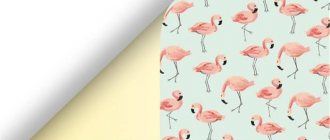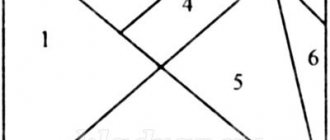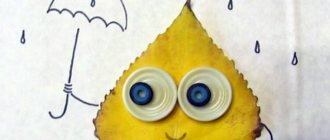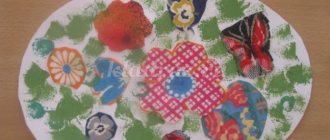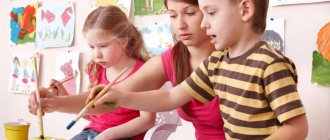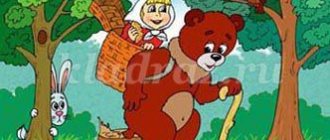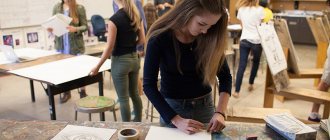Methodological development of a mathematics lesson in 1st grade. Topic: Units of measurement. Length.
Author: Romasheva Svetlana Vadimovna
Math lesson notes. Topic:Unit of measurement length
Purpose: lesson To create conditions for consolidating knowledge about units of measurement of quantities: length;
develop knowledge of measuring length using various measures and a ruler. Subject skills: – improve children’s ability to convert large units of measurement into small ones and vice versa; apply this knowledge and skills in practice; – be able to distinguish between units of length; – develop computing skills; – to cultivate in students an interest in mathematics and a love for their hometown, an interest in its history and modern life. UUD: Personal: form a positive attitude towards others, develop aesthetic feelings, form a moral orientation, develop reflection Cognitive: develop skills in working with sources of information: navigate the text of tasks, analyze and synthesize what you read Regulatory: act according to instructions; accept and maintain a learning task; control yourself when performing tasks; develop control and self-control skills; evaluate the actions of one’s own activities and those of other students. Communicative: develop skills in educational cooperation, enter into communication, create a statement. Resources Presentation, envelopes with measurements. Lesson type: Consolidation. During the classes. Lesson stage: Motivation Before working, sit down, See if everything is there. Let's start the lesson, It will be useful for the children, Try to understand everything, Learn to reveal secrets, Give complete answers, So that you can get only about. UZU: lead students to formulate the topic of the lesson. Uzu: to determine the topic of the lesson, guess the riddle. PZ: guess the riddle. SUZ: There is a long segment, there is a shorter one, we draw it using a ruler, by the way. Five centimeters is the size, it is called... Answer: Length ORD: - What is this riddle about? – What do you think length is? – How to measure the length? IV: – Now guess what the topic of our lesson is? – So, the topic of today’s lesson is the unit of measurement length. Lesson stage: Setting goals and objectives - What goal will we set for ourselves during the lesson? UZ No. 2 “Measurement of length”. USU: develop skills in measuring length. Uzu: Now let's practice measuring the length. PZ: look at the board and answer the question: what is drawn on the board? (segment) SUZ: ORD: we work orally. – What tool is needed to measure its length? (ruler) - How to measure the length of a segment? – What properties of objects do you know? – Which properties can be compared using the signs “greater than”, “less than”, “equal”? – Indeed, the properties of objects that can be compared using the words “more”, “less”, “equal” are called VALUES. – what quantities are familiar to you? – on your desks there are three strips of different colors, two are the same length, the third is not. – Come up with examples of properties of objects that are quantities. (Height, size, temperature, length) – find out whether the length of objects is a quantity. Try to compare the length of the strips that are on your desks. – Which of them is the longest? - How to prove this? (By placing strips on top of each other) KV: if necessary, the teacher corrects the children’s answers. – Is it possible to put it like this? (the teacher shows the incorrect measurement of the segments). – Who can help me? – Will the length be a value? (yes, length is a quantity, because we can compare the length and say which strip is larger (longer) and which is smaller (shorter). - Why? (It can be compared using mathematical symbols). IV: red and blue stripes have the same length, but the green one is not, it is longer. On the screen there is an entry: z>k, s <з, с=к. Look at the screen, have we measured the segments correctly? (yes) - are you familiar with the signs more, less and equal? Physical education minute “If you live a fun life, do this!” Lesson stage: Consolidation of LES No. 3 “Measurements of length.” LES: consolidate knowledge of measuring the length of segments. LES: now let’s see what you know about the segment. PL: answer the question: What can we compare objects using length? (pencils, book and notebook, height, foot, etc.) ORD: we work orally. -What do you see on the board? (There are two segments on the board, blue and red, at a considerable distance from each other from a friend.) - prove that these are segments? (There is a beginning and an end. A segment is a straight line bounded on both sides.) - What can you say about these segments? – Compare the lengths of the segments. – We got different answers. What should I do? – you can’t trust it by sight, it won’t work. - What to do? (you need to measure the segments) - How to measure? – What can you use to measure it? (rulers) - What if there is no ruler? (children's answers) - People have long thought about how to measure length and often used what was at hand. – Let’s try to measure the lengths of the segments with what we have at hand, for example, a red strip. – who wants to go to the board and measure the segments? Blue segment = 5 red stripes. Red line = 6 red stripes. (The teacher writes on the board: 5 and 6.) - What can we say about the length of the segments? (The blue segment is shorter than the red one, since 5<6) – Let’s measure the same segments using the green strip. Blue segment = 4 green stripes Red segment = 5 green stripes. -What can you say about the numbers obtained? (5 and 4) (The numbers turned out to be different) - Why did the measurement results turn out to be different, because the segment is the same? (We used strips of different lengths) -These strips can be called measurements. – Is it convenient to measure length with different standards? Why? (Inconvenient, you get different numbers, you can get confused) KV: the teacher corrects the answers if necessary. IV: Maybe some of you remember what standard is used to measure length? That's right, length is measured using centimeter, meter, kilometer, etc. UZ No. 4 “Measuring length with a ruler” UZ: systematize knowledge about measuring length using a centimeter. Ultrasound: now let's remember how to measure length using a ruler. PZ: listen to me, I’ll tell you interesting facts. SUZ: In ancient times, those measuring instruments that were always with you were used to measure lengths: step, elbow, palm, fathom. (Drawings appear on the board.) Almost 150 years ago, representatives of 17 states, including Russia, agreed to use more accurate units of length measurement common to all countries. One of them is a centimeter. - How do we abbreviate cm? (slide) - Take the envelope on your desks. - What's in it? (The envelope contains three strips of different colors: 1cm, 5cm, 7cm.) – Take the shortest strip. – This is a length measurement equal to one centimeter. – Measure the length of the yellow strip with this measure. – What is the length of the strip? (And you, and you...? Go write it down on the board.) - What is the most convenient way to measure the length of the strip? (with a ruler) - take out the rulers - What do you see on the ruler? (numbers, dashes) HF: according to the standard. – tell us how to use a ruler correctly. IV: Draw a segment in your notebook yourself and use a ruler to measure its length. Lesson stage: Summing up – Let’s summarize our work with you. -What did we repeat today? -What were the key words in the lesson? – Tell us what you liked and remembered most about the lesson? Homework: – Share your knowledge at home. Observe which objects around you can be compared in length. – Write down your homework.
